Companion planting, especially when it comes to sweet potato companion plants, is a tried and tested gardening method that offers a multitude of benefits. When we talk about companion planting for sweet potatoes, we delve into a world of symbiotic relationships between different plants in your garden. These relationships aren’t just about aesthetics; they contribute significantly to the overall health and productivity of your sweet potato garden.
The benefits of companion planting for sweet potatoes are numerous and noteworthy. By strategically choosing companion plants, you create an ecosystem within your vegetable garden that promotes growth, deters pests, and enhances the flavor of your sweet potatoes. Imagine a garden where sweet potato vines intertwine with compatible companions, such as pole beans or thyme, creating a harmonious environment where each plant supports the other’s growth.
Best sweet potato companion plants
Please Find below the best sweet Potato companion plants
Plants that deter pests:
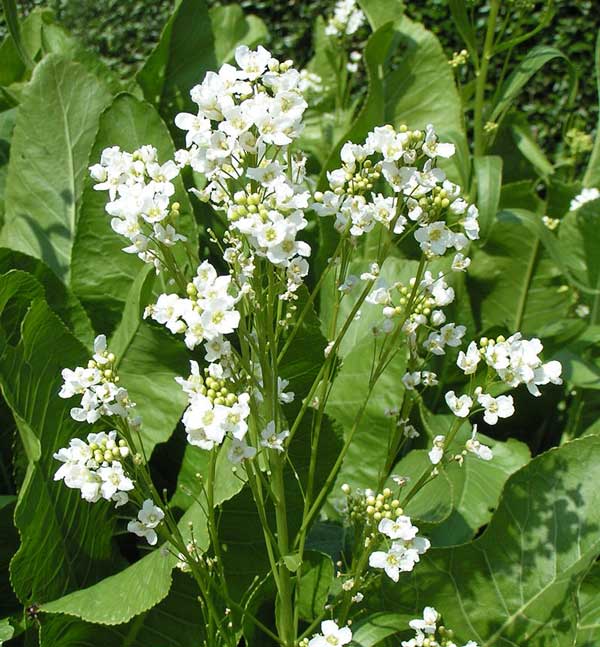
Nasturtium: Nature’s Pest Repellent
Nasturtiums are prized not only for their vibrant blooms but also for their remarkable ability to deter pests in the garden. These colorful companions emit a scent that repels common pests like aphids and cucumber beetles, safeguarding your sweet potatoes from potential harm. By interplanting nasturtiums with sweet potatoes, you create a symbiotic relationship where each plant benefits the other, resulting in a thriving and pest-resistant garden ecosystem.
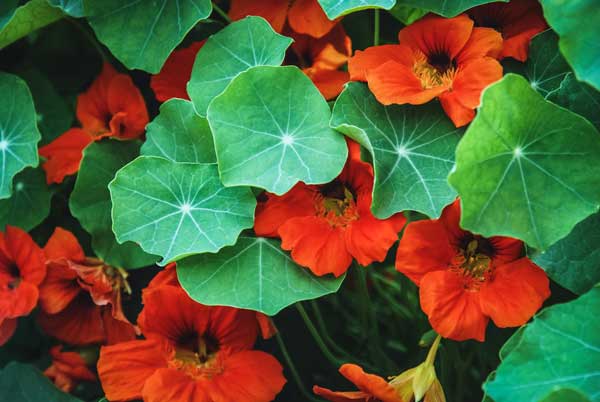
Marigold: Guardian of the Garden
Marigolds, with their cheerful blooms and pest-repellent properties, are invaluable allies in the quest for pest-free sweet potatoes. These sunny companions emit a scent that deters nematodes, root knot nematodes, and other harmful insects, protecting the delicate roots of your sweet potatoes. By incorporating marigolds into your sweet potato garden, you not only add beauty but also enhance the health and resilience of your crop, ensuring a bountiful harvest.

Onions: Guardians Against Pests
Onions, with their distinctive aroma and culinary versatility, play a vital role as companion plants for sweet potatoes. These underground allies emit compounds that repel pests like aphids, onion flies, and spider mites, effectively safeguarding your sweet potato crop from potential infestations. By planting onions alongside sweet potatoes, you create a natural barrier against pests, promoting a healthy and thriving garden environment where both crops can flourish.

Thyme a valuable companion plant
Thyme is a valuable companion plant for sweet potatoes, Sweet potatoes and Thyme offer pest control, weed suppression, pollinator support, and culinary benefits. By incorporating thyme into the garden alongside sweet potatoes, growers can promote a healthy and productive growing environment while enjoying the flavorful rewards of their harvests.

Plants that attract beneficial insects:
Yarrow: Nature’s Welcome Mat for Sweet Potato Companions
Yarrow, with its delicate clusters of flowers and feathery leaves, serves as a gracious host for beneficial insects in your sweet potato garden. Its subtle allure draws in pollinators like bees and butterflies, vital for fertilizing sweet potato flowers and promoting fruit development. Additionally, yarrow attracts predatory insects such as lacewings and soldier beetles, valuable allies in controlling pests like aphids and potato beetles. By planting yarrow alongside your sweet potatoes, you create an inviting sanctuary where beneficial insects can thrive, contributing to a vibrant and balanced garden ecosystem.

Moss Rose: Cozy Retreats Amidst Sweet Potato Vines
Moss rose, with its delicate blooms and succulent foliage, offers cozy retreats for beneficial insects amidst the sprawling vines of your sweet potato garden. These low-growing plants act as magnets for pollinators like bees and butterflies, ensuring the successful pollination of sweet potato flowers and the subsequent formation of tubers. Moreover, moss rose attracts predatory insects such as ladybugs and hoverflies, essential for keeping populations of aphids and potato beetles in check. By incorporating moss rose into your garden design, you provide essential habitat and sustenance for beneficial insects, fostering a healthy and resilient ecosystem.

Oregano: A Fragrant Oasis for Sweet Potato Guardians
Oregano, with its aromatic leaves and delicate flowers, serves as a fragrant oasis for beneficial insects in your sweet potato garden. Its enticing aroma attracts pollinators like bees and butterflies, crucial for ensuring the pollination of sweet potato flowers and the development of robust tubers. Furthermore, oregano entices predatory insects such as parasitic wasps and hoverflies, essential for controlling populations of aphids and potato beetles. By adding oregano to your garden landscape, you create a sensory-rich environment that not only delights the senses but also supports the health and vitality of your sweet potato crop.
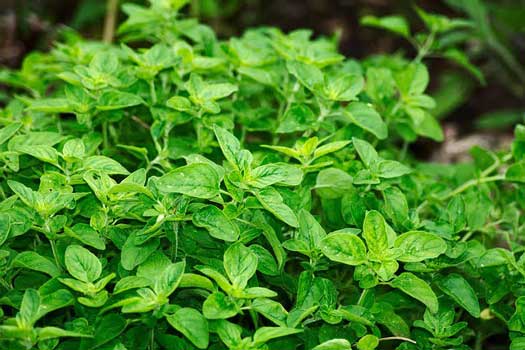
Plants that enhance growth and flavor:
Spinach: Nutrient-Rich Support for Sweet Potato Growth
Spinach, with its nutrient-rich leaves and vibrant green hue, serves as a valuable companion plant for sweet potatoes, enhancing both growth and flavor. Rich in essential vitamins and minerals, spinach provides nourishment to the soil, ensuring that sweet potato plants have access to the nutrients they need to thrive. Additionally, the presence of spinach in the garden helps to suppress weed growth, allowing sweet potatoes to establish themselves more effectively. By planting spinach alongside sweet potatoes, you not only promote healthy growth but also enhance the flavor and nutritional value of your harvest.

Beets: Boosting Sweet Potato Growth with Underground Support
Beets, with their earthy flavor and vibrant colors, offer underground support to sweet potatoes, enhancing their growth and flavor. As beets develop beneath the soil, they loosen the earth and improve its texture, creating an ideal environment for sweet potatoes to spread their roots and absorb nutrients. Furthermore, the presence of beets in the garden helps to deter pests and suppress weed growth, providing sweet potatoes with a conducive growing environment. By interplanting beets with sweet potatoes, you promote robust growth and enhance the natural sweetness of your harvest.

Parsnips: Deep Roots and Nutrient-Rich Soil for Sweet Potatoes
Parsnips, with their long taproots and sweet, nutty flavor, contribute to the growth and flavor of sweet potatoes by enriching the soil and providing structural support. As parsnips grow, their deep roots penetrate the earth, aerating the soil and improving its structure, allowing sweet potatoes to develop healthy root systems. Additionally, parsnips are excellent nutrient accumulators, drawing up essential minerals from the soil and making them available to neighboring plants like sweet potatoes. By planting parsnips alongside sweet potatoes, you create a mutually beneficial relationship that fosters healthy growth and enhances flavor.
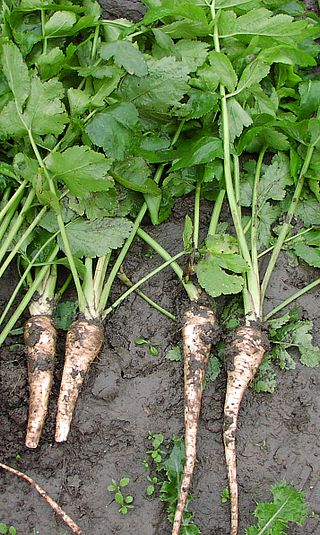
Pole Beans: Climbing Companions for Sweet Potato Vines
Plants like pole beans, beans as companion plants with their climbing habit and bountiful harvests, provide valuable support and companionship to sweet potato vines, enhancing their growth and flavor. As pole beans climb alongside sweet potato vines, they create a vertical garden space that maximizes yield and conserves ground space. Additionally, pole beans are nitrogen-fixing plants, enriching the soil with essential nutrients that promote healthy sweet potato growth. By planting pole beans with sweet potatoes, you create a symbiotic relationship that benefits both crops, resulting in a plentiful and flavorful harvest.
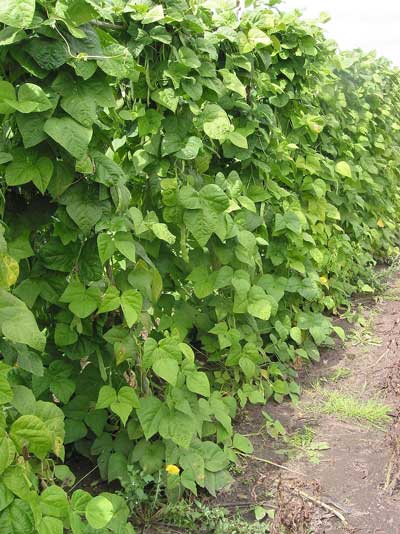
Lettuce: Shade and Moisture Regulation for Sweet Potato Beds
Lettuce, with its crisp leaves and refreshing taste, offers shade and moisture regulation to sweet potato beds, promoting optimal growth and flavor development. As lettuce grows, its leafy canopy provides protection from the sun, shielding the soil and sweet potato plants from excessive heat and moisture loss. Additionally, lettuce’s shallow root system helps to retain moisture in the soil, ensuring that sweet potatoes have access to the water they need for healthy growth. By planting lettuce as a companion to sweet potatoes, you create a microclimate that supports lush foliage and flavorful tubers.

Potato: Companions in Growth and Flavor
Potatoes, with their versatile nature and hearty flavor, make excellent companions for sweet potatoes, enhancing both growth and flavor. As potatoes and sweet potatoes grow together, they create a diverse root system that improves soil structure and nutrient retention, allowing both crops to thrive. Additionally, potatoes help suppress weed growth and deter pests, creating a healthier environment for sweet potatoes to flourish. By planting potatoes alongside sweet potatoes, you not only maximize space and yield but also enrich the flavor and texture of your harvest.
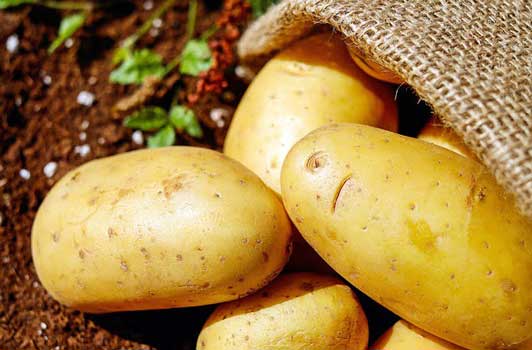
Peas: Nitrogen-Rich Partners for Sweet Potato Success
Peas, with their delicate tendrils and sweet flavor, serve as nitrogen-rich partners for sweet potatoes, supporting their growth and enhancing their flavor. As peas grow, they fix nitrogen in the soil, making it readily available to neighboring plants like sweet potatoes. Additionally, peas help suppress weed growth and improve soil structure, creating a favorable environment for sweet potatoes to thrive. By interplanting peas with sweet potatoes, you harness the power of nitrogen fixation to promote healthy growth and delicious harvests.
Read About: Companion Plants For Peas

String Beans: Supporting Sweet Potatoes with Structural Strength
String beans, with their slender pods and crisp texture, provide structural support to sweet potatoes, enhancing their growth and flavor. As string beans climb alongside sweet potato vines, they create a trellis-like structure that helps support the weight of developing tubers. Additionally, string beans help suppress weed growth and conserve moisture in the soil, creating optimal conditions for sweet potatoes to flourish. By planting string beans as companions to sweet potatoes, you ensure that your harvest is not only plentiful but also flavorful and well-supported.
Trollius: Enhancing Sweet Potato Beds with Vibrant Beauty
Trollius, with its bright blooms and cheerful demeanor, enhances sweet potato beds with vibrant beauty while promoting growth and flavor. As Trollius flowers bloom, they attract pollinators like bees and butterflies, essential for fertilizing sweet potato flowers and ensuring successful fruit set. Additionally, Trollius helps suppress weed growth and retain moisture in the soil, creating a conducive environment for sweet potatoes to thrive. By incorporating Trollius into sweet potato beds, you add a touch of color and charm while supporting healthy growth and flavorful harvests.
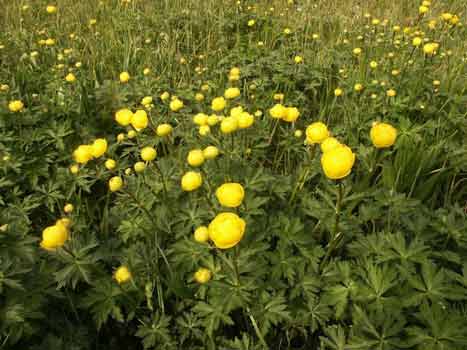
Peanuts: Nutrient-Rich Partners in Sweet Potato Gardens
Peanuts, with their nutritious nuts and sprawling vines, are nutrient-rich partners in sweet potato gardens, enhancing both growth and flavor with their beneficial presence. Rich in protein, fiber, and essential nutrients, peanuts enrich the soil and promote healthy root development in sweet potato plants. Their deep-reaching roots improve soil structure and fertility, creating optimal growing conditions for sweet potatoes. Furthermore, the unique flavor and texture of peanuts add depth and complexity to sweet potato dishes, making them even more delicious and satisfying. When planted alongside sweet potatoes, peanuts contribute to a diverse and bountiful harvest, ensuring a nutritious and flavorful bounty for gardeners to enjoy.
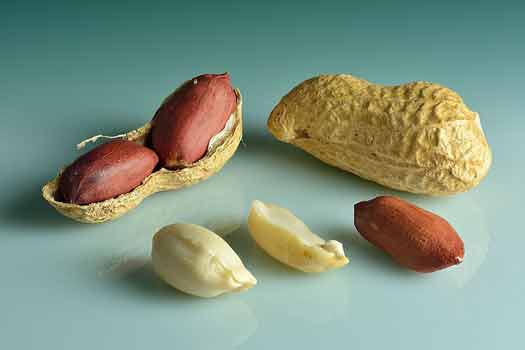
Bad Companion Plants for Sweet Potatoes
Sorghum: Sorghum produces allelopathic compounds that can inhibit the growth of other plants, including sweet potatoes. Planting sorghum near sweet potatoes may hinder their growth and development.
Cassava: Cassava plants produce cyanogenic compounds that can be toxic to other plants. Planting cassava near sweet potatoes may pose a risk of allelopathy and competition for resources.
Walnut: Walnut trees produce juglone, a chemical that can inhibit the growth of certain plants. While sweet potatoes may tolerate juglone to some extent, planting them near walnut trees is generally considered neutral.
Maize (Corn): Maize has a dense root system that competes with sweet potatoes for nutrients and water, potentially reducing their growth and yield. Additionally, both crops are susceptible to similar pests and diseases, increasing the risk of infestations and infections.
Brassicas (Cabbage, Broccoli, Cauliflower): Brassicas are heavy feeders that require high levels of nutrients, which can deplete the soil and compete with sweet potatoes for resources. Additionally, brassicas are susceptible to similar pests and diseases as sweet potatoes, increasing the risk of infestations and infections.
Nightshades (Tomatoes, Peppers, Eggplants): Nightshades belong to the same botanical family as sweet potatoes (Solanaceae) and may attract similar pests and diseases. Planting them together increases the risk of cross-contamination and may exacerbate pest and disease pressure on both crops.

Companion Planting Techniques for Sweet Potatoes: Cultivating Harmony in Your Garden
Companion Planting Techniques for Sweet Potatoes: Cultivating Harmony in Your Garden

Common Pests and Diseases of Sweet Potatoes: Safeguarding Your Garden’s Bounty
In the verdant expanse of your sweet potato garden, it’s essential to be mindful of potential threats that could jeopardize the health and vitality of your precious crop. By staying vigilant and implementing proactive measures, you can effectively mitigate the risks posed by common pests and diseases, ensuring a thriving and bountiful harvest year after year.
Identifying Common Pests and Diseases
Among the myriad challenges that sweet potato growers may encounter, pests and diseases rank prominently as potential adversaries. From the relentless onslaught of potato beetles to the insidious spread of potato blight, these antagonists can wreak havoc on your garden if left unchecked. By familiarizing yourself with the telltale signs of infestation or infection, such as yellowing leaves, gnawed foliage, or powdery mildew, you can swiftly address any issues and safeguard the health of your sweet potatoes.
Implementing Preventive Measures
Prevention is often the most effective strategy when it comes to combating pests and diseases in your sweet potato garden. By adopting sound agricultural practices and maintaining optimal growing conditions, you can create an environment that is less hospitable to harmful organisms. Planting companion plants like marigolds and onions, known for their pest-repelling properties, can help deter unwanted intruders and promote a healthier garden ecosystem. Additionally, practicing crop rotation and providing adequate spacing between plants can reduce the risk of disease transmission and ensure optimal airflow and sunlight exposure.
Utilizing Organic Pest Control Methods
When faced with pest infestations or disease outbreaks, it’s essential to employ environmentally friendly and sustainable pest control methods. Organic remedies such as neem oil, diatomaceous earth, and companion planting offer effective alternatives to chemical pesticides, minimizing harm to beneficial insects and the surrounding environment. Additionally, introducing natural predators like ladybugs or parasitic wasps can help keep pest populations in check, maintaining a delicate balance within your garden ecosystem.
Maintaining Vigilance and Resilience
While the battle against pests and diseases may present formidable challenges, perseverance and vigilance are key to overcoming adversity in your sweet potato garden. By staying attuned to the needs of your plants and responding promptly to any signs of trouble, you can nurture a resilient and thriving garden that withstands the test of time. Remember, with proper care and attention, your sweet potatoes will flourish, rewarding you with a rich and abundant harvest that serves as a testament to your dedication and stewardship of the land.
Embracing Integrated Pest Management
In the quest to protect your sweet potato garden from pests and diseases, integrated pest management (IPM) emerges as a comprehensive approach that integrates multiple strategies to minimize risks while maximizing benefits. By combining cultural, biological, and mechanical control methods, IPM offers a holistic and sustainable solution to pest and disease management. Cultural practices such as proper sanitation, weed management, and crop rotation disrupt pest life cycles and reduce disease pressure, while biological controls harness the power of natural predators and beneficial microbes to keep pest populations in check. Additionally, mechanical interventions such as handpicking pests or using physical barriers provide targeted and environmentally friendly alternatives to chemical pesticides, preserving the health and integrity of your garden ecosystem.
Promoting a Healthy Garden Ecosystem
Ultimately, the key to safeguarding your sweet potato garden lies in fostering a robust and resilient ecosystem that naturally resists pests and diseases. By promoting biodiversity, enhancing soil health, and cultivating a harmonious balance between plants and beneficial organisms, you create an environment where pests and diseases are less likely to thrive. Incorporating diverse plant species, including companion plants and pollinator-attracting flowers, encourages natural pest control and promotes ecological resilience. Additionally, enriching the soil with organic matter and practicing responsible water management supports the growth and vigor of your sweet potatoes, making them more resistant to stress and disease.
FAQs about Sweet Potato Companion Plants
1. What are sweet potato companion plants?
Sweet potato companion plants are other plant species that are strategically planted alongside sweet potatoes to promote their growth, deter pests, and improve overall garden health.
2. What are the best companion plants for sweet potatoes?
Some of the best companion plants for sweet potatoes include marigolds, onions, nasturtiums, and pole beans. These plants offer various benefits such as pest deterrence, soil improvement, and enhanced flavor.
3. How do companion plants help sweet potatoes?
Companion plants provide several benefits to sweet potatoes. They can deter pests that are harmful to sweet potatoes, attract beneficial insects that aid in pollination and pest control, and improve soil health by fixing nitrogen and suppressing weeds.
4. What are some examples of bad companion plants for sweet potatoes?
Plants that compete for nutrients or space with sweet potatoes or attract pests detrimental to sweet potatoes are considered bad companions. Examples include plants like maize, walnuts, and coconut.
5. How can I effectively plant sweet potatoes with companion plants?
To effectively plant sweet potatoes with companion plants, consider factors such as compatibility, spacing, and planting timing. Ensure that companion plants do not overshadow or overcrowd sweet potatoes and avoid planting species that may compete for resources.
6. What are some common sweet potato pests and diseases?
Common pests and diseases that affect sweet potatoes include sweet potato weevils, potato beetles, potato blight, and various fungal infections. Companion plants like marigolds and onions can help deter some of these pests.
7. How does integrated pest management (IPM) benefit sweet potato gardens?
IPM integrates various strategies, including cultural, biological, and mechanical controls, to minimize pest and disease risks while maximizing benefits for sweet potato gardens. It offers a holistic and sustainable approach to pest management, reducing reliance on chemical pesticides.
8. Can companion plants lure pests away from sweet potatoes?
Yes, certain companion plants, such as marigolds and nasturtiums, emit scents or chemicals that repel pests away from sweet potatoes, thus reducing the likelihood of infestation.
9. Which companion plants provide nutrients to help sweet potatoes grow? Nitrogen-fixing plants like beans and peas can enrich the soil with nitrogen, which is essential for sweet potato growth. Additionally, plants like marigolds and onions contribute to soil health and fertility.
10. How can I learn more about selecting and planting companion plants for sweet potatoes?
To learn more about selecting and planting companion plants for sweet potatoes, consult gardening resources, attend workshops or seminars, and experiment with different combinations in your own garden. Observation and experience are valuable teachers in the world of companion planting.
Conclusion
In conclusion, the journey of cultivating sweet potatoes is greatly enhanced by understanding the importance of companion planting. By selecting the right companions, sweet potato growers can create a harmonious and thriving ecosystem that maximizes growth, flavor, and overall plant health.
Companion plants such as spinach, beets, parsnips, lettuce, potatoes, pole beans, peas, onions, peanuts, and many others play crucial roles in supporting sweet potatoes throughout their growth cycle. These plants not only provide essential nutrients, improve soil structure, and deter pests but also enhance the flavor and yield of sweet potato tubers.
It is important to choose companion plants wisely, considering factors such as compatibility, nutrient requirements, and growth habits. Plants like nasturtiums, marigolds, yarrow, moss rose, oregano, and others attract beneficial insects, while others like horseradish, onions, and marigolds deter pests that may harm sweet potatoes.
Additionally, intercropping sweet potatoes with compatible plants like beans, peas, and peanuts can optimize space utilization and increase overall productivity. These vining plants can be planted near or together with sweet potatoes, creating a mutually beneficial relationship that supports growth and development.
Furthermore, by learning about these great companion plants and their respective roles in the garden, growers can make informed decisions to create a balanced and resilient growing environment for sweet potatoes. Through companion planting, sweet potato growers can give back to their companion plants while reaping the rewards of a healthy and abundant harvest.

